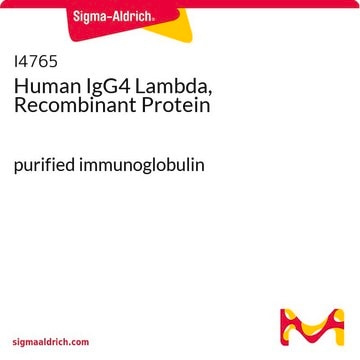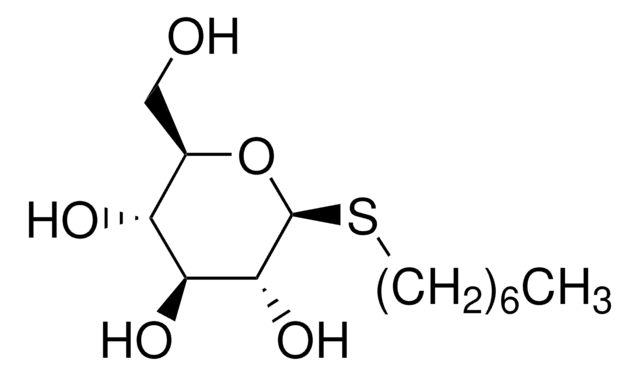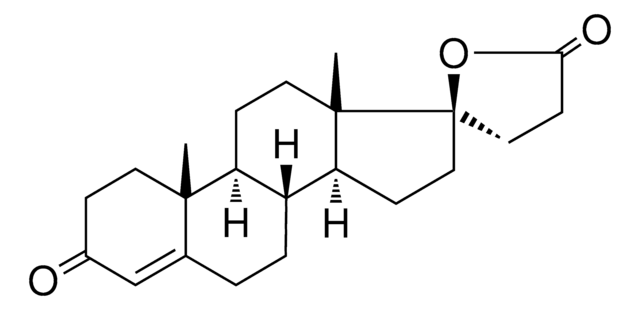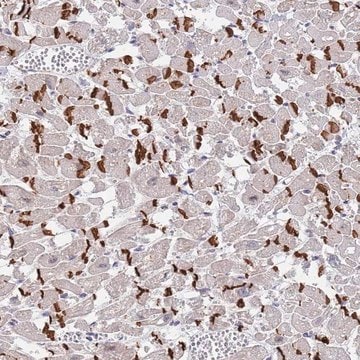14764
1-Deoxy-D-xylulose
≥80% (TLC)
Synonym(s):
(3S,4R)-3,4,5-Trihydroxy-2-pentanone, 1-Deoxy-D-threo-2-pentulose
Sign Into View Organizational & Contract Pricing
All Photos(1)
About This Item
Empirical Formula (Hill Notation):
C5H10O4
CAS Number:
Molecular Weight:
134.13
MDL number:
UNSPSC Code:
12352201
PubChem Substance ID:
NACRES:
NA.25
Recommended Products
assay
≥80% (TLC)
form
liquid
optical activity
[α]/D +31.0±3.0°, c = 1 in H2O
storage temp.
−20°C
SMILES string
CC(=O)[C@@H](O)[C@H](O)CO
InChI
1S/C5H10O4/c1-3(7)5(9)4(8)2-6/h4-6,8-9H,2H2,1H3/t4-,5-/m1/s1
InChI key
IGUZJYCAXLYZEE-RFZPGFLSSA-N
Biochem/physiol Actions
Metabolite of the non-mevalonate pathway, generally found in prokaryotes, as precursor to isoprenoids as well as non-isoprenoids like vitamins. As this pathway is not present in humans, it is of interest for the development of bacterium-specific drugs in the search for treatments of infectious diseases.
Linkage
In E. coli, 1-deoxy-D-xylulose is converted into 1-deoxy-D-xylulose 5-phosphate by phosphorylation of the C-5 hydroxy group by D-xylulokinase.
Other Notes
To gain a comprehensive understanding of our extensive range of Monosaccharides for your research, we encourage you to visit our Carbohydrates Category page.
Storage Class
13 - Non Combustible Solids
wgk_germany
WGK 3
flash_point_f
Not applicable
flash_point_c
Not applicable
Certificates of Analysis (COA)
Search for Certificates of Analysis (COA) by entering the products Lot/Batch Number. Lot and Batch Numbers can be found on a product’s label following the words ‘Lot’ or ‘Batch’.
Already Own This Product?
Find documentation for the products that you have recently purchased in the Document Library.
W Eisenreich et al.
Trends in plant science, 6(2), 78-84 (2001-02-15)
Recently, a mevalonate-independent pathway was discovered in bacteria and plants that leads to the formation of isopentenyl diphosphate and dimethylallyl diphosphate, the two basic precursors of isoprenoids. Although many details of the widely distributed pathway are unknown, some intermediates, mechanisms
Felix Rohdich et al.
Proceedings of the National Academy of Sciences of the United States of America, 100(4), 1586-1591 (2003-02-07)
Earlier in vivo studies have shown that the sequential action of the IspG and IspH proteins is essential for the reductive transformation of 2C-methyl-d-erythritol 2,4-cyclodiphosphate into dimethylallyl diphosphate and isopentenyl diphosphate via 1-hydroxy-2-methyl-2-(E)-butenyl 4-diphosphate. A recombinant fusion protein comprising maltose
Andréa Hemmerlin et al.
The Journal of biological chemistry, 278(29), 26666-26676 (2003-05-09)
In plants, two pathways are utilized for the synthesis of isopentenyl diphosphate, the universal precursor for isoprenoid biosynthesis. The key enzyme of the cytoplasmic mevalonic acid (MVA) pathway is 3-hydroxy-3-methylglutaryl-coenzyme A reductase (HMGR). Treatment of Tobacco Bright Yellow-2 (TBY-2) cells
Ines Neundorf et al.
Chembiochem : a European journal of chemical biology, 4(11), 1201-1205 (2003-11-13)
Upon feeding of [2-(13)C,4-(2)H]-1-deoxy-D-xylulose to Streptomyces ghanaensis, the deuterium label was retained exclusively at positions C-7 and C-17 in the moenocinol part of the moenomycin antibiotics. This result vindicates the hypothesis that the C(25) structure of moenocinol is assembled from
Jiaqi Liu et al.
Frontiers in plant science, 8, 2082-2082 (2017-12-23)
As one type of the most important alkaloids in the world, terpenoid indole alkaloids (TIAs) show a wide range of pharmaceutical activities that are beneficial for clinical treatments.
Our team of scientists has experience in all areas of research including Life Science, Material Science, Chemical Synthesis, Chromatography, Analytical and many others.
Contact Technical Service








